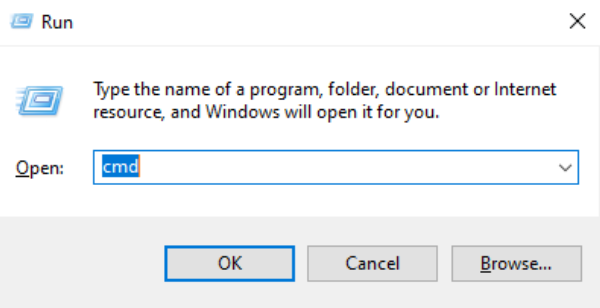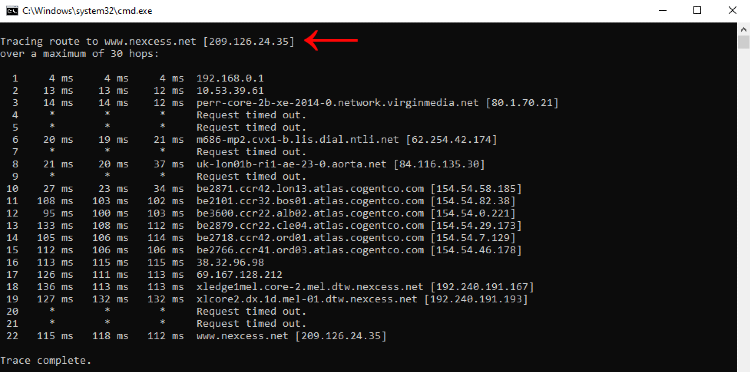How to Find Out Where Your Server is Located
When a website is hosted, it’s actually being stored on a server. Your hosting provider will likely have servers spread across the globe, but which server your website is located on is something you should be aware of.
No matter who your hosting provider is, the location of the server that your site is physically hosted on can have an effect on the delivery of your website. In turn, that can have an effect on your visitors and ranking.
In this article, we’ll talk you through why your server location matters and how you can find out where your server is located.
Why Does It Matter Where My Server Is Located?
The location of your server can have an effect on your website in a couple of ways. We’ll go over each of those ways now.
1. Server Location Can Have an Impact on Website Speed and Latency

No matter what type of website you have, it’s important to ensure that it loads fast. In short, if your server is far away, your website will be slower. The more distance there is between a domain visitor and the domain’s server, the longer it will take for data to be returned to the browser. That in itself can be detrimental to success.
Studies show that people will only wait for a couple of seconds for a website to load. Any longer than that and you’re likely to lose visitors — and potentially money.
For that reason, it’s important to ensure that your server is located close to your target audience. Doing that alone will ensure that your website loads faster, but there are other ways you can optimize your website to increase page speed, too.
2. The Location of the Server Can Affect SEO

You may think of SEO as just keywords and great titles, but there’s more to it than that. Your hosting server location can have an effect on SEO, too.
Hosting your website in the same location as your target audience can improve your SEO ranking tremendously. For example, you should have a U.S. IP address for a U.S. business.
Richard Baxter, the founder of Builtvisible.com, conducted his own test back in 2015 by changing his hosting server from his location, the UK, to a U.S server. By doing so, he noted a significant change in SEO ranking, with a drop in search results provided for the UK audience, but improving in the U.S.
So, by ensuring that your website is delivered from a server geographically close to your target audience, you can ensure that your customers are served as quickly as possible.
How Do I Find the Location of My Website’s Server?
Before you can find out where your server is located, you first need to find out what your website’s IP address is. The easiest way to do that is by using the command prompt (CMD), but there are also apps that can help you. Alternatively, you can simply find the IP address in the Hostdedi customer portal for your site.
We’ll show you how to find your website’s IP address using the command prompt.
How to Find Your Website’s IP Address
1. Open the Command Prompt
Press the Windows Key and “R” to open the Run box. Now type “cmd” into the Run box and press Enter.

2. Type “Tracert” and the Website’s Address into the Command Prompt
Now type “tracert” followed by the website’s URL into the Command Prompt box and press Enter.

3. Note the IP Address Next to the Website’s URL
You will see an IP address next to the website’s URL on the line that says “Tracing route to.” That is the website’s IP address, and you can use it in the next section to find your server location.

A more simple method is searching your website URL on whatsmydns.net.
How to Find the Location of the Website’s IP Address
Now that you have your website’s IP address, you can use an IP tracer, such as the one at ip-address.com, to find out the location of the IP address.
1. Paste the IP Address into the Search Bar
Simply paste the IP address into the search bar, and press Enter.

2. Find the Country Location on the Information Page
Your search will return information on the IP address. Look for the country location.

How Can I Find My Visitors’ Location?
Now you know that hosting your website in the same location as your visitors will help performance greatly. But how can you find out where your audience is if you’re not a local business and don’t have a particular audience?
Thankfully, with the aid of tools like Google Analytics, you can easily track the geolocation of your visitors.

You should note where the majority of your traffic is coming from and ensure that your website is hosted there. It may cost you more to host in certain areas, but you shouldn’t cheap out on customer satisfaction as it will cost you in the long run anyway.
But what if you have visitors from multiple locations? How can you ensure your website performs at its best for everybody? That’s where a content delivery network (CDN) comes in.
What Is a Content Delivery Network (CDN)?
Content delivery networks, or CDNs, are an excellent service to invest in if you are targeting a global audience or your audience falls into many different locations.
A CDN basically has a large number of data centers that are distributed around the globe. Those data centers work together and ensure that the content requested is delivered fast.
When you use a CDN, it stores a copy of your website on its servers. When someone visits your website, it can then load from their nearest data center, thus reducing load times but maintaining quality throughout.
So, if you have multiple visitor locations, using a CDN, can help you cater to all of them equally.
Conclusion
We hope this article has helped you understand how to find your website’s IP address and where your server is located, as well as what impact the server location can have on your website.
Building and hosting a website is one thing, but making sure it loads fast is another. To do that, your web hosting server should be in the same location as your target audience. Doing so will reduce the distance between your audience and the server it needs to load from.
Your audience is the key to a successful business, so putting them first is a no-brainer. On top of that, hosting your website in the correct location can boost your website’s SEO ranking.
Using tools like Google Analytics can help you narrow down your target audience, and if you need to serve multiple locations, a content delivery network (CDN) can work wonders.
If you still find that your website is slow, there may be other things slowing down your website.
What’s your experience with your website’s server location? Has it impacted your website’s success? Have you used a content delivery network? Let us know in the comment section, and thank you for reading.



